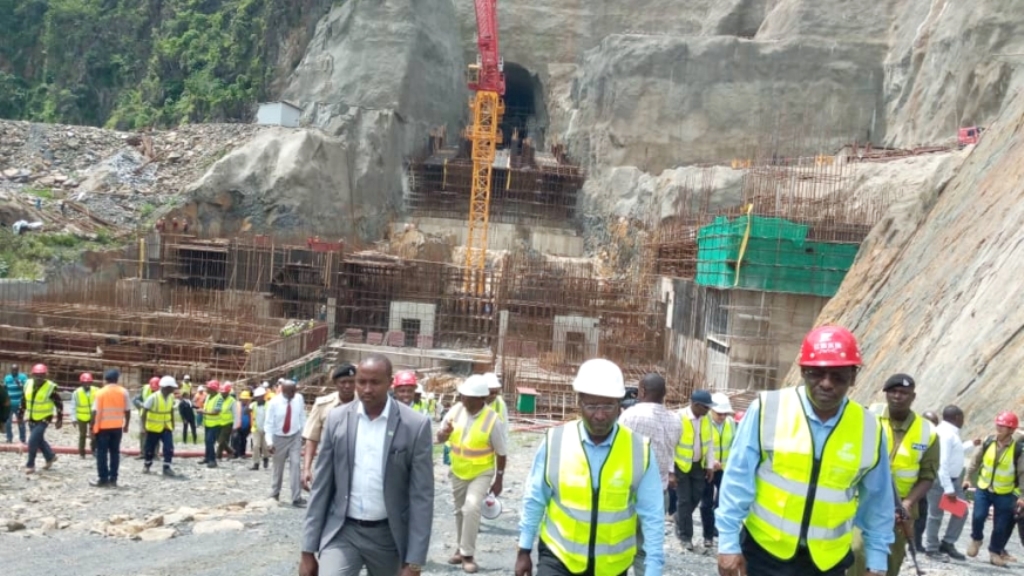
Our Projects are
Transforming African Trade
Quick Contacts
2nd Floor, Fidelity Insurance Centre Waiyaki Way, Westlands

ENERGY Ministers from Rwanda, Tanzania and Burundi have rejected a request to extend the deadline for the completion of the Regional Rusumo Falls Hydroelectric project.
Despite expressed satisfaction on the implementation of the hydro-power project, the Council of Ministers (CoM) meeting held at the Rusumo One Stop Border Post (OSBP) rebuffed the request for deadline extension by the board until September, 2021.
Tanzanian Minister for Energy Dr Medard Kalemani who attended the 11th Ministerial meeting said instead, they have directed the board to work night and day and ensure that the project is completed by end of February, next year.
He explained that work progress currently stood at 59 per cent adding that among steps taken include recruiting a new project manager who started work on July 28, this year. The meeting was also attended by Burundi Minister for Energy and Minerals, Engineer Come Manirakiza and his Rwandan counterpart, Ambassador Claver Gatete.
Once completed, the Regional Rusumo Falls Hydroelectric Project (RRFHP) is envisaged to address the acute shortage of electricity experienced by the three countries, which negatively affect their economies.
The project will generate 80 MW of renewable clean energy, relatively low cost power to the national grids of the three countries shared equally, with each country receiving an additional 165 GWH per year.
The additional power will benefit about 1,146,000 people in the three countries-520,000 in Burundi (5.4 per cent), 159,000 in Tanzania (0.34 per cent) and 467,000 in Rwanda (4 per cent). The joint development was entered by the three governments through a Tripatite Agreement signed on February 16, 2012.
The project is located at Rusumo Falls, at the common border of Rwanda and Tanzania on River Kagera. The project is being implemented with support from the the World Bank (WB), which donated about US dollars 3 40m for construction of the 80MW Power Plant while the African Development Bank (AfDB) donated US dollars 128m for the transmission lines.
The relatively inexpensive electicity will contribute to foreign exchange earnings and improve balance of payments since the power generated will replace imported petroleum products. More than 500 people will be employed directly by the project.
At the regional level the transmission lines will form a backbone system that will link the Great Lakes region allowing power exchange with Eastern Democratic Republic of Congo (DRC), as well as other Nile Equatorial Lakes countries and later to Southern Africa Power Pool, facilitating power trade among member countries and improving regional power supply reliability.
Shortage of electricity in these countries and indeed the entire Nile Basin region has resulted into an underdeveloped manufacturing sector, hence limited options for business development necessary for income, reduce dependency on toxic fuel and limited opportunities for modernising and improving the quality of key infrastructure including health care, water supply and other social services.
The Regional Rusumo Falls Hydroelectric Project (RRFHP) was conceived in 1977 under the auspices of the regional trans-boundary organisation, the Kagera Basin Organisation (KBO) under the old East Africa Community (EAC).
However, implementation of the project was delayed due to several factors including lack of commitment by the partner states, lack of investment finance, civil conflicts as well as absence of a joint institution to coordinate the project.
The three countries jointly mandated Nile Equatorial Lakes Subsidiary Action Program Coordination Unit (NELSAPCU) to coordinate the development of studies and later the implementation of the Regional Rusumo Falls Hydroelectric project.
The project will improve business and bilateral ties between Rwanda, Burundi and Tanzania, will increase trade flow, enhance economic and social development.
This would invite Rwanda and Burundi investors to contribute in industrialization through construction of industries, five star hotels and other key sectors including agriculture, health, education and minerals, a key priority for the fifth phase government under President John Magufuli.
Industries that produce goods for mass consumption such as clothes, textiles and edibles are highly encouraged. President Magufuli’s administration has embraced industrialisation as part of the panacea for unemployment among the youths because industrialization drive was expected to be one of the significant remedies by creating thousands of job opportunities across the country.
Electricity power is a catapult which Tanzanians should utilize by establishing medium and large industries. Without an efficient industrial base, the country’s economy can hardly develop and create job opportunities. Industries have great potential of creating jobs and attracting capital, skills and knowledge industrialization is the way to prosperity national development cannot be imported, it must come from within.
President Magufuli is determined to ensure that by 2025 all villages in the country are connected with electricity. Todate about 4,3 95 villages out of 12,268 villages in the country were connected with electricity implying 36 per cent.
Tanzania has current electricity access of about 67 per cent with household connectivity at 3 2 per cent. Rwanda has electricity access of about 46 per cent and targets to increase to 100 per cent by 2024 by connecting additional 2.4 m households while Burundi, on other hand, has electricity access rate at about 10 per cent.
Most households in the region still rely on firewood for their cooking and heating needs leading to extensive deforestation and soil erosion.
Source: Dailynews
Disclaimer: The views and opinions expressed in this article are those of the authors and do not necessarily reflect the official policy or position of TradeMark Africa.